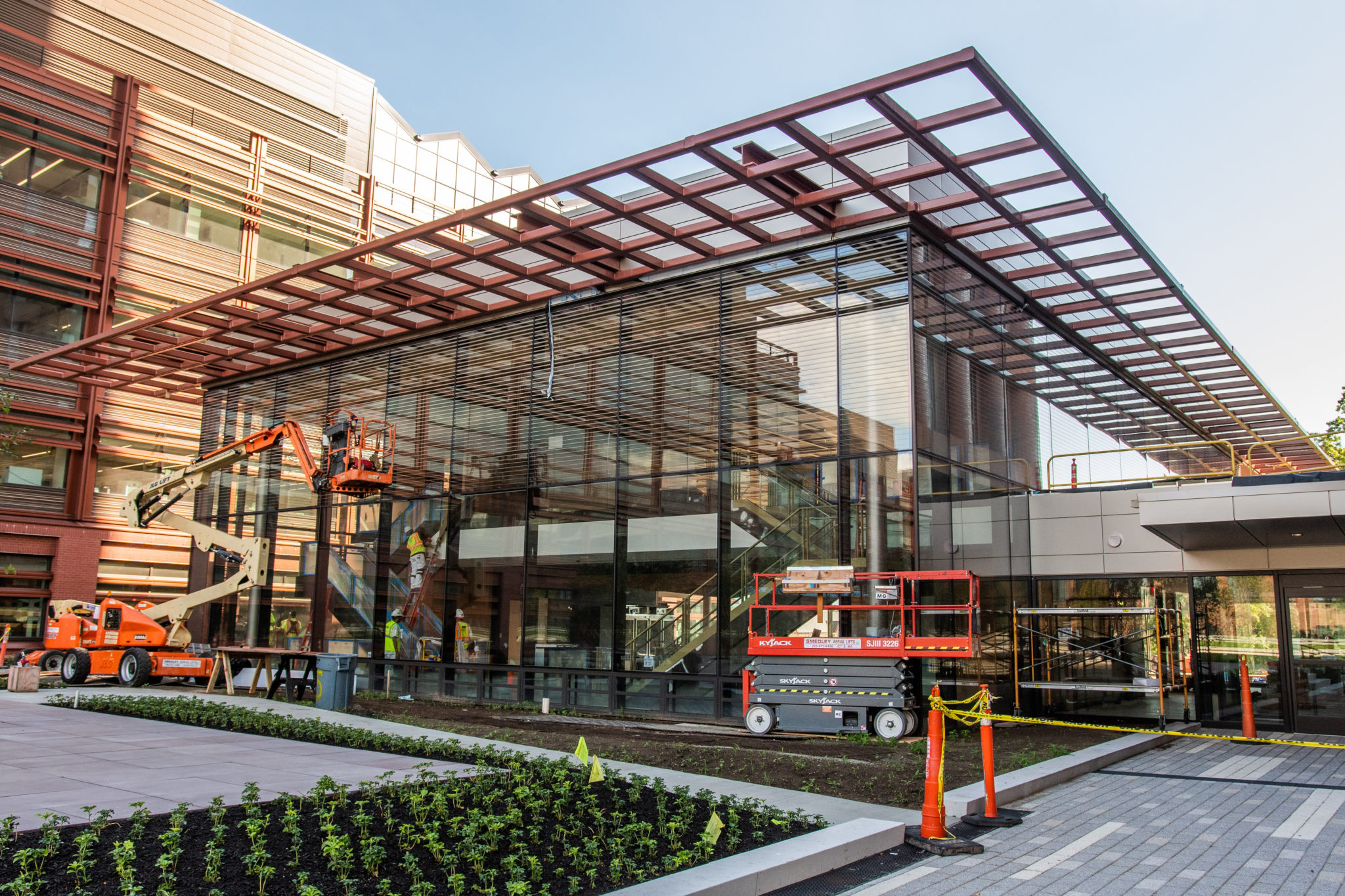
Lukas Flippo
As professors adjust to the new Yale Science Building, a few members of the Physics Department are eagerly anticipating their impending move to the site, which they hope will be an upgrade from their current labs.
The YSB replaces the J.W. Gibbs Laboratories — which were bulldozed in 2017 to make room for the new building that officially opened on Oct. 29. Even though many researchers started moving into the new space before the fall semester began, several physics labs have yet to leave their spots in the Sloane Physics Laboratory. Professors from across three labs are slated to have new spaces in the YSB because it’s better equipped to handle their research. They will transition into the building within the coming months. Two physics professors interviewed by the News said the new space will increase interdisciplinary work and resolve challenges they faced in their old laboratories — such as temperature control and flooding.
“I would like to be in my lab as soon as possible,” said Director of Undergraduate Studies for Physics Simon Mochrie. He added that he looks forward to having a “beautiful, spacious, vibration-free laboratory.”
The building’s base lies atop bedrock, which Mochrie said creates low-vibration lab spaces — an important feature for the physicists’ research.
Professor of physics Jack Harris, who will soon move into a lab in the YSB basement, agreed with his colleague on the importance of the design.
“We measure quantum behavior in the motion of surprisingly large objects, and those effects involve … vibrations that are 100,000 times smaller than the diameter of an atom,” Harris said of his research group. “If a building will go on bedrock, that’s a unique opportunity … It’s always better to start with a quieter environment.”
To many researchers in YSB, the move has been an improvement over their previous homes, which include Kline Biology Tower and Sloane Physics Laboratory.
Those in KBT lost millions of dollars and priceless experiment materials after a basement fire broke out earlier this year. And according to Mochrie, SPL had its problems, too.
“The infrastructure for precision experiments in Sloane is challenging,” he said. He explained that his lab in SPL “frequently has flooded” and previously had issues controlling the temperature, which could negatively impact experiments.
Molecular, cellular and developmental biology professor Scott Holley has already moved into his lab on the first floor of YSB. He said the new building’s natural light and environment-friendly energy management practices are commendable improvements. And despite small hiccups in the move-in process, research in his lab is continuing smoothly, he said.
Still, both Mochrie and Harris said that their department would benefit from increased support from the University. Currently, the Physics Department is spread across several buildings, including 17 Hillhouse Ave., the Yale Wright Laboratory and SPL. Mochrie said the department has long been searching for a new building to call home. He added that the department also lacks enough graduate students to satisfy its research need.
“It’s holding our research back relative to our peers,” Mochrie said.
The two physics professors added that their department will benefit from the YSB in this regard. The YSB will offer members of different labs the opportunity to collaborate. In between the building’s wide hallways, members of different labs have the chance to mingle and interact across disciplines more frequently than they did in other buildings.
To Mochrie, whose research subfield is biological physics, the proximity to other researchers is “the real exciting reason to be in YSB.” His lab, which he shares with associate professor of physics and of ecology and evolutionary biology Alison Sweeney, was chosen to move because “it makes intellectual sense” to be near the quantitative biology faculty, he said.
“I am completely confident that there will be a lot of intellectual synergies,” he said.
Once move-ins are complete, the YSB will house laboratories from a wide assortment of disciplines, including the Molecular, Cellular and Developmental Biology, Molecular Biophysics and Biochemistry and Physics Departments, as well as the Quantitative Biology Institute, according to Yale News. Faculty of Arts and Sciences Dean Tamar Gendler wrote in an email to the News that the Quantitative Biology Institute — called QBio for short — will “bring together faculty with sophisticated data science and biological expertise, enabling us to use data in new ways to uncover fundamental principles that underpin the nature and logic of biological organisms.”
According to Harris, the advanced optical techniques studied in the YSB physics labs also have fruitful applications in biology experiments.
“I think the thinking behind this building was that there’s fertile territory at the interfaces between these two disciplines,” Harris said.
The new building boasts 280,300 square feet of space over seven stories, complete with wide hallways, separated office spaces and garden terraces, according to a Yale News press release.
The O.C. Marsh Lecture Hall in the YSB— Yale’s largest lecture hall — seats almost 500 and has been used for classes, lectures and even the building’s dedication.
Matt Kristoffersen | matthew.kristoffersen@yale.edu
Giovanna Truong | giovanna.truong@yale.edu







